The week at a glance
- Greater Yellowlegs still in Highland
- Western Sandpiper still in Norfolk
- Bufflehead still in Cornwall
- Sharp-tailed Sandpiper still in Somerset
- Wilson's Snipe again on Scilly
- Buff-bellied Pipit still in Waterford
A cocktail of wintry weather conditions and the inevitability of Christmas just around the corner ensured that, unsurprisingly, the third week of December was a quieter period for rare birds, with fewer reports received. Nevertheless, a range of lingering Nearctic waders and wildfowl continued to grab the headlines.
Highland's Greater Yellowlegs continued to frequent flooded fields on the south side of Loch Fleet on 15th–20th. With the disappearance of the Northumberland bird seemingly confirmed, it would appear that these individuals are likely one and the same — had the movement been in the opposite direction, the single-bird theory would have been adopted without question.

Greater Yellowlegs, Loch Fleet, Highland (Photo: Dave Pullan)
In Norfolk, the first-winter Western Sandpiper further extended its stay at Cley Marshes to 21st, while on Scilly the Wilson's Snipe was again seen at Lower Moors, St. Mary's on 18th. However, Somerset's Sharp-tailed Sandpiper seems to have finally done a bunk — it was still at Blagdon Lake on 15th–16th but subsequent searching both there and at Chew Valley Lake have drawn blanks; presumably the combination of colder conditions and rising water levels were finally enough to push it off south.

Western Sandpiper, Cley Marshes NWT, Norfolk (Photo: Jon Evans)
The Buff-bellied Pipit was still at Clonea Strand (Waterford) to 20th, and the Bufflehead remained in residence at Helston Loe Pool (Cornwall) to 18th, where it will now presumably remain until spring-induced hormones start to kick in. Cornwall also chipped in with belated news of a male Lesser Kestrel near Zennor on 1st November — the third individual of the autumn.
Cackling Goose-hunting on Islay (Argyll) on 18th produced a Taverner's(-type) amongst Barnacles at Mulindry and a Richardson's at Bridgend. Another Richardson's was still at Ballyconnell (Sligo) on 20th, while the bird of unknown origin was still at Torr Reservoir to 20th. Black Brants were again widespread: two familiar Irish individuals were still at Wexford Wildfowl Reserve on 17th–18th and Dungarvan (Waterford) on the latter date. British records concerned long-stayers still at Donna Nook (Lincs) on 17th–21st, and Trimley Marshes (Suffolk), Wyke Regis (Dorset) on 18th, moving to Ferrybridge on 20th, again at Whiteford, Gower (Glamorgan) on 20th, and Warham Greens (Norfolk) on 21st. Red-breasted Geese were still at Harwood Dale (N Yorks) on 17th and the Exminster Marshes/Topsham area (Devon) on 18th–19th, although there was no news on the Essex bird.
Wild Snow Geese of both colours were again noted. After being last reported on 16th November, the blue morph was again seen on Tiree (Argyll) on 15th–20th while Donegal's white morph was at Big Isle on 17th–18th. In addition, the three white morphs were again at Leighton Moss (Lancs) on 16th. Two Ross's Geese were still in fields west of Great Yarmouth (Norfolk) on 17th before being seen flying north over Sea Palling the following day. What was perhaps one of the same birds was then in fields at Weybourne and, later, Cley on 19th.
It was a quieter week for rare dabbling ducks; presumably this was attributable to a lack of coverage rather than a genuine exodus. An American Wigeon at Bodenham Lake (Herefordshire) on 20th was presumably the same bird present at Wellington Gravel Pits earlier in the autumn, while drakes remained at Kirk Loch (Dumf & Gall) on 15th–16th, Wintersett Reservoir (W Yorks) to 21st, and Dawlish Warren (Devon) to 20th. Another decent showing of Green-winged Teals included two drakes at East Chevington (Northumberland) on 15th, with one of these moving to Druridge Pools on 18th. New drakes were also at Baleshare, North Uist (Outer Hebrides) on 16th, Watton NR (E Yorks) on 18th–21st, Ardcrony Turlough (Tipperary) on 20th and Lough Gur (Limerick) on 21st, with others remaining at Belfast Lough (Antrim), Eyebrook Reservoir (Leics), Hodbarrow (Cumbria), Kinneil Lagoon (Forth), and Soulseat Loch and Caerlaverock (Dumf & Gall). Two Blue-winged Teal remained at Bull Island (Dublin) on 16th–18th and St. Mary's (Scilly) on 17th–21st.
Female Lesser Scaup remained at Marden Quarry (Northumberland) on 17th–18th and Slimbridge (Glos) to 21st, while the drake was still at Wimbleball Lake (Somerset) all week. In the same county, the two drake Ring-necked Ducks remained at Chard Reservoir to 15th only, with others still at Cowpen Bewley (Cleveland) on 16th and in the Castleward area (Down) on 17th. The female was still at Ranworth Broad (Norfolk) to 21st, where the only Ferruginous Duck of the week was reported alongside at least one hybrid from 17th.

Ring-necked Duck, Castleward, Down (Photo: Derek Charles)
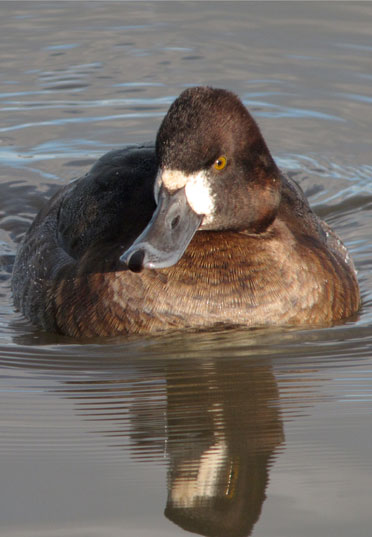
Lesser Scaup, Slimbridge WWT, Gloucestershire (Photo: James Lees)
A first-winter female King Eider at Ballinskelligs (Kerry) was a superb find on 17th, and showed extremely well just off the pier there to 20th at least. This is only the second county record, following a female in Dingle Harbour almost eleven years ago. In Moray, the adult drake was also still performing admirably in Burghead Harbour all week, with two reported there on 21st. Three Surf Scoter records involved the regular female off Dawlish Warren (Devon) and a young drake off Penzance (Cornwall) on 17th–21st, as well as a new female at Turbot Island (Galway) on 20th–21st.

King Eider, Burghead, Moray & Nairn (Photo: James Wood)
There were still over 25 Great White Egrets spread across Britain this week. Five were again at Ham Wall (Somerset) on 21st, with twos still at Dungeness and Hamstreet (both Kent) throughout. New birds included those over Chilton Foliat (Wilts) and at Llangorse Lake (Powys) on 18th, and at Frisby Gravel Pits (Leics) on 19th–20th. The Whalsay (Shetland) bird was still at Symbister on 16th.

Great White Egret, Oare Marshes NR, Kent (Photo: Mike Gould)
Cattle Egrets were new in at Warblington (Hants) from 18th and East Holme (Dorset) on 20th–21st. Two were again at Grouville Marsh (Jersey) on 19th–21st, and the Northern Irish bird again roosted at Hillsborough Lake (Down) that evening. Following one at the adjacent Grove Ferry the previous day, two Glossy Ibis were at Stodmarsh (Kent) on 18th–21st with others still at Fingringhoe Wick (Essex) to 18th and Leighton Moss (Lancs) all week. The White Stork was again reported near Glenrothes (Fife) on 20th-21st.

Glossy Ibis, Stodmarsh NNR, Kent (Photo: Steve)
In Galway, the Pallid Harrier again roosted at Lough Corrib on 17th. A minimum of eleven Rough-legged Buzzards involved lingering birds from Shetland to Kent, with the Gedling Pit Top (Notts) individual proving particularly popular throughout. One was still at Ouse Fen (Cambs) on 17th–18th, with it (or another) reported nearby at Fen Drayton on 17th.
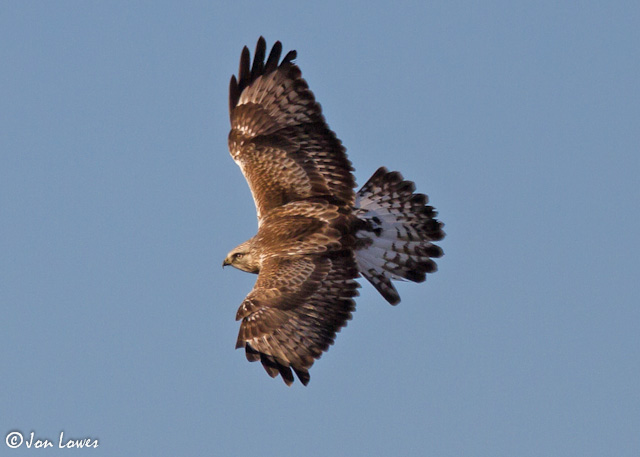
Rough-legged Buzzard, Gedling, Nottinghamshire (Photo: Jon Lowes)
An unseasonable Pectoral Sandpiper was found creeping around flooded fields at Dundonald Camp (Ayrshire) on 16th–20th, while Kerry's Least Sandpiper was still at Black Rock Strand to 19th. The juvenile Spotted Sandpiper was seen again at Lyme Regis (Dorset) on 20th–21st, and the Plym Estuary (Devon) bird was present throughout. Furthermore, the adult was again seen from Herriott's Bridge at Chew Valley Lake (Somerset) on 20th but the two Long-billed Dowitchers that have been touring Somerset since mid-October were not reported this week — perhaps, like the Sharp-tailed, they have finally moved on. A 'new' Long-billed Dowitcher was at Kidwelly Quay (Carmarthens) on 21st, although this could conceivably be the same as that last seen there on 11th October.
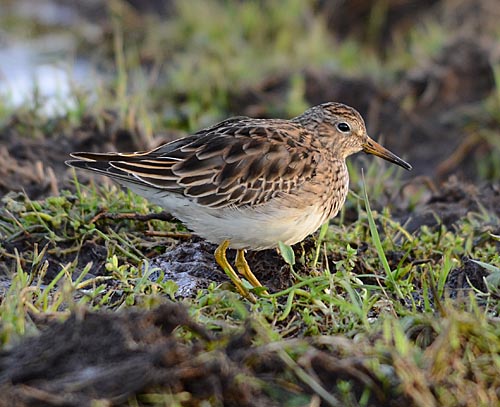
Pectoral Sandpiper, Dundonald Camp, Ayrshire (Photo: Keith Hoey)
There was a sharp reduction in Grey Phalarope records this week, with only four birds noted. Lingering birds were still at Stevenston Point (Ayrshire) to 15th and Martin Mere (Lancs) to 16th, while one was off Thorpeness (Suffolk) on 17th and another briefly in Scarborough harbour (N Yorks) the following day. An adult Sabine's Gull past Holy Island (Northumberland) on 17th was the only individual of the week.
A second-winter American Herring Gull was new at Youghal dump (Cork) on 17th, but there was no news on the Baltimore bird. A meagre ten Ring-billed Gulls were reported during the week — Ireland's seven consisted of new birds at Lough Conn (Mayo) on 16th and Bray harbour (Wicklow) on 18th as well as a first-winter again showing well in Tralee (Kerry) on 19th–21st. Long-stayers were still in Limerick city, Groomsport (Down), Portrush (Antrim) and Sandymount (Dublin). An adult was new at Radipole Lake (Dorset) on 18th and 21st, but the only other two British records were regular adults at Gosport (Hants) still to 17th and Sands Lane Gravel Pits (W Yorks) again on 18th–19th.

Ring-billed Gull, Tralee, Kerry (Photo: Ed Carty)
The striking adult Kumlien's Gull was still commuting between Symbister and Hamister, Whalsay (Shetland) on 15th–19th. Another adult was reported in the roost at Bartley Reservoir (W Mids) on 15th, and the juvenile was again at Beddington Sewage Farm (London) on 17th. Forty-three Iceland Gulls this week included a peak count of six in Stornoway Harbour, Lewis (Outer Hebrides) on 20th, with increasing numbers penetrating southwards towards the myriad of landfill sites and reservoirs across the English Midlands. Slightly fewer Glaucous Gulls were reported, however, with just 28 birds including twos at Ditchford Gravel Pits (Northants), Ormsary (Argyll), Ardivachar Point, South Uist (Outer Hebrides) and Bay of Skaill (Orkney).

Iceland Gull, Amble, Northumberland (Photo: Andrew Kinghorn)

Glaucous Gull, Ardivachar Point, S.Uist, Outer Hebrides (Photo: Steve Duffield)
Three Common Cranes flew over Squabb Wood then Timsbury (Hants) on 16th, then over Botley Wood in the same county two days later. A single, 'wild' individual was still with the reintroduced flock on Aller Moor (Somerset) on 17th. On the subject of reintroduced birds, a tagged Great Bustard was at Ringstead Bay (Dorset) on 17th then at Buckland Ripers the following day.
Wyke Regis (Dorset) held on to its Richard's Pipit throughout, although last week's bird from Gibraltar Point (Lincs) had moved on. A better showing of Shore Larks included nine at Havergate Island (Suffolk) and four at Holkham (Norfolk) on 18th, while the long-stayer was still at Swalecliffe (Kent) on 19th. Singletons were at also at Skeffling (E Yorks), Grain and Shell Ness, Sheppey (both Kent) on 15th.
Three Desert Wheatears were still around: the male was again at Bempton Cliffs (E Yorks) on 21st with the confiding first-winter still at Newbiggin-by-the-Sea all week, but the female in Lerwick (Shetland) lingered to 15th only. The Northern Wheatear at Bull Island (Dublin) was still present to 21st, and Waterford's Bluethroat was still hopping about on the beach at Clonea throughout. It was a better week for Waxwings, with 50 reports on Bird News Extra including flocks of 83 in Jarrow (Durham), 70 in Edinburgh (Lothian) and 45 in Ipswich (Suffolk) — other, smaller groups were well scattered in eastern areas.
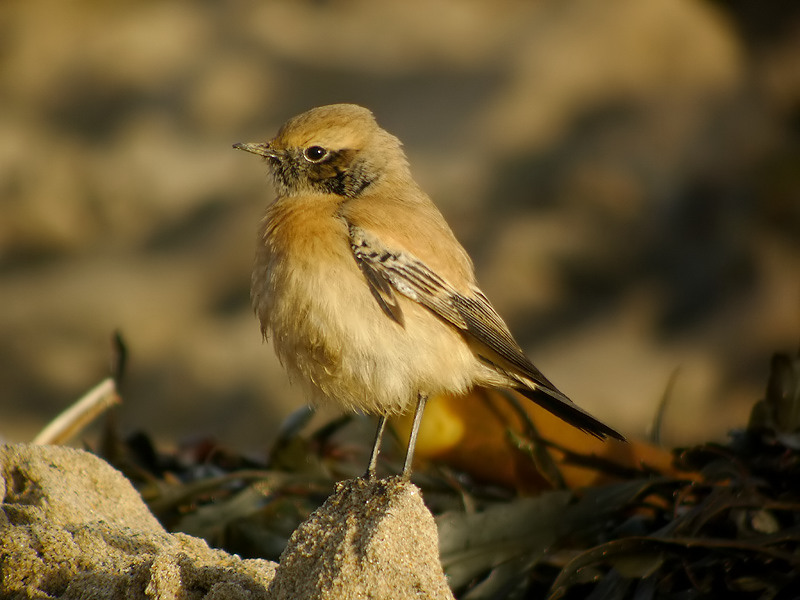
Desert Wheatear, Newbiggin-by-the-Sea, Northumberland (Photo: Craig Shaw)
Colder conditions were presumably to blame for the reduction in Phylloscopus warbler records; in Dorset, the Hume's Leaf Warbler battled on at Wyke Regis to 21st, while the Yellow-browed Warbler at Clennon Valley Lakes (Devon) was still showing well all week and a Dusky Warbler remained on St. Mary's (Scilly) to 21st. Just five Siberian Chiffchaffs were reported, including a sole Irish record from Coonagh settlement ponds (Limerick) on 18th.

Siberian Chiffchaff, Helston, Cornwall (Photo: Steve Bury)
A solid showing of 23 Great Grey Shrikes included several new English birds: at Brook (Kent) on 17th, Therfield Heath (Herts) on 17th–20th, New Hythe Gravel Pits (Kent) on 18th, Buckhead Bottom and Blashford Lakes (both Hants) on 20th, and Hemingby (Lincs) on 21st. Four Welsh records included three in Glamorgan, while two Scottish birds involved a new bird at Aboyne (Aberdeenshire) on 18th in addition to the old favourite still at Guardbridge (Fife) to 20th.
At Dungeness (Kent), the ringed male Penduline Tit was still present on 15th. The Coues's Arctic Redpoll remained at Titchwell (Norfolk) to 20th.
With the festive period now upon us, birders will be hoping for a final, seasonal surprise of 2011. With just ten days to go before the new year is upon us, time is running out. Many would appreciate a seasonable rarity such as an Ivory Gull, of which there has not been an easily gettable individual for several years now. However, with two Allen's Gallinules recorded in the Western Palearctic during early December, perhaps we need to think outside the box for that real Christmas treat...whatever you may be doing (and wherever you may be going) this Christmas, have a wonderful, bird-filled week — let us all pray for that tell-tale mega alert to awaken us from post-dinner slumber.
Photo of the Week: 15th–21st December
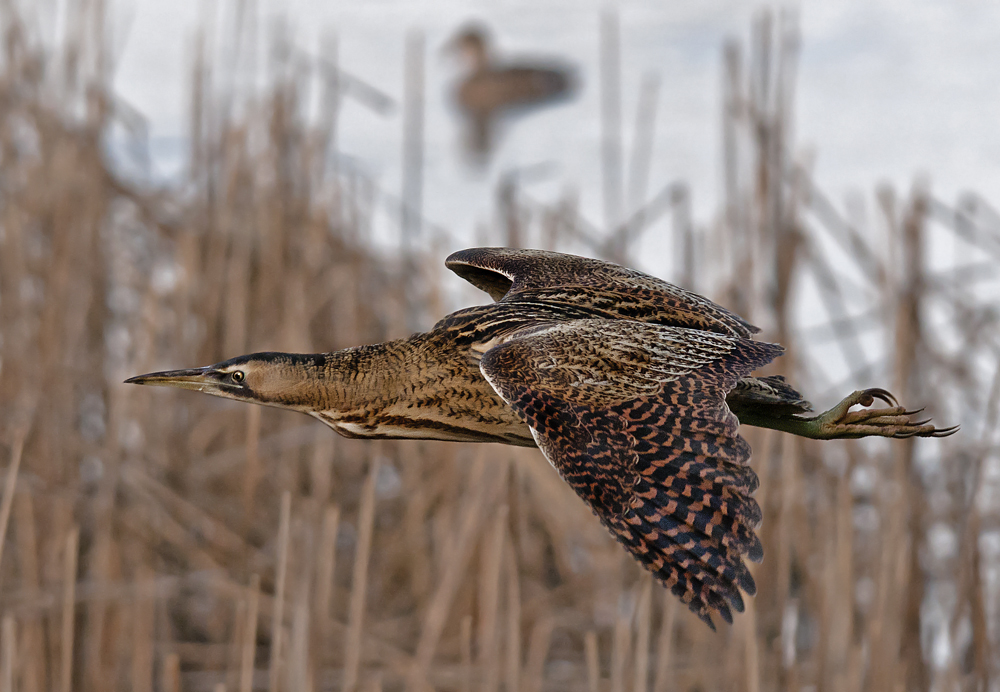
Bittern, Slimbridge WWT, Gloucestershire (Photo: Wayne Davies)
Bitterns are one of those species that make life difficult for bird photographers. As well as being difficult to find due to their superb camouflage and skulking behaviour, they are also highly unpredictable. Even at well-known locations, it's possible to spend days in draughty hides without anything to show for it. Every now and then, though, they suddenly put in an appearance as they emerge from the reeds and, if you're really lucky, treat you to a close-range fly-by. In those moments, it's essential to be prepared or the opportunity will be missed. This week, Wayne Davies was faced with such an opportunity at Slimbridge WWT in Gloucestershire and, as we can see, managed to keep his nerve and capture the bird mid-flypast. Backgrounds can make or break shots like this and, in this case, the defocused reeds and duck provide an excellent sense of place and show the bird's natural habitat, as well as keeping a restricted palette of colours in the image. Wayne's composure bagged him a great image and his first Photo of the Week.
Other notable photos

Crested Tit, undisclosed site, Highland (Photo: James Wood)

Short-eared Owl, undisclosed site, Northamptonshire (Photo: Douglas McFarlane)
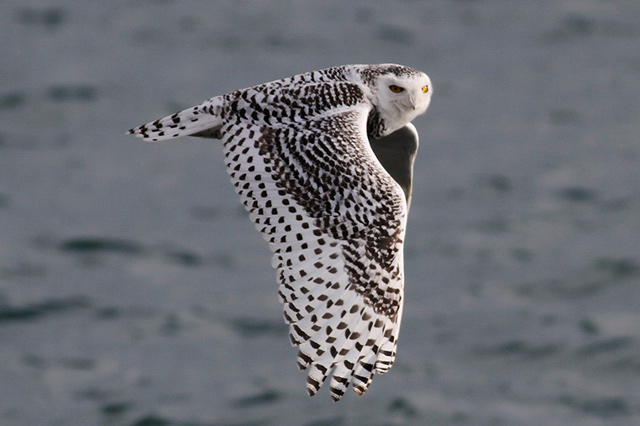
Snowy Owl, Canada (Photo: Richard Bonser)

King Eider, Burghead, Moray & Nairn (Photo: Allan Adam)

Goldfinch, Wigan, Greater Manchester (Photo: Roy)

Nuthatch, Ayr, Ayrshire (Photo: Chas Moonie)

Pintail, Slimbridge WWT, Gloucestershire (Photo: Mr Clive Daelman)

Snow Bunting, Northam Burrows CP, Devon (Photo: Rob Cross)

Great White Egret, Balnamoon, Angus & Dundee (Photo: Ian Hay)
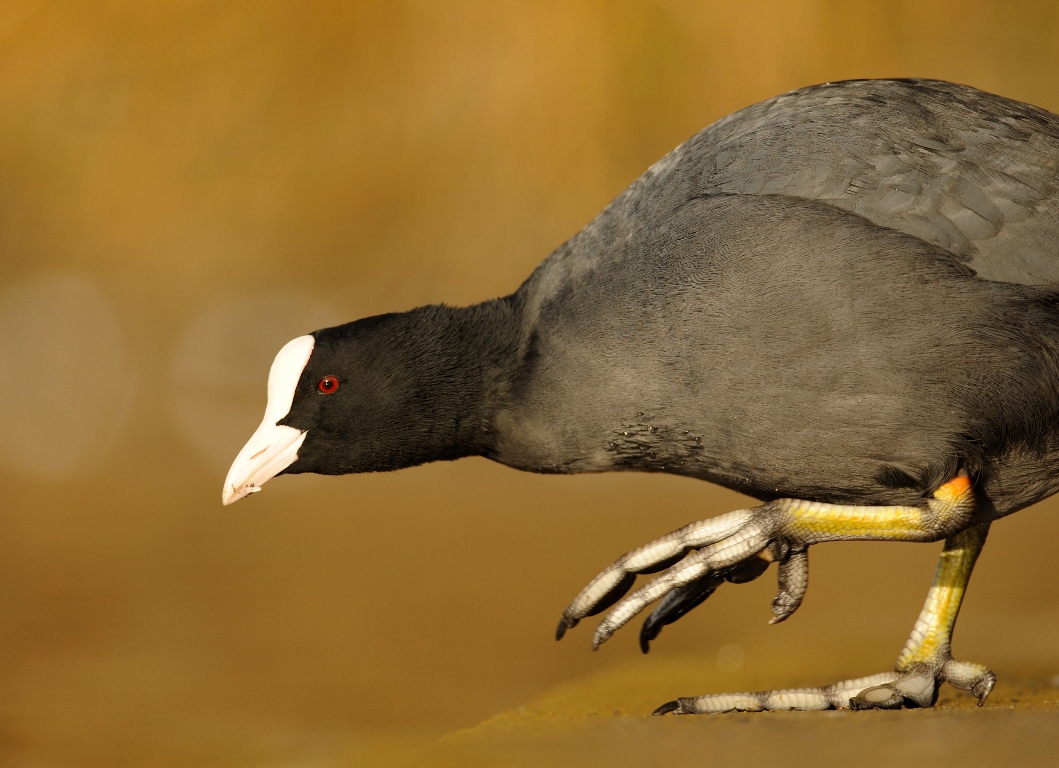
Coot, Regent's Park, Greater London (Photo: Ben Andrew)

Fieldfare, Mere, Wiltshire (Photo: Esther)
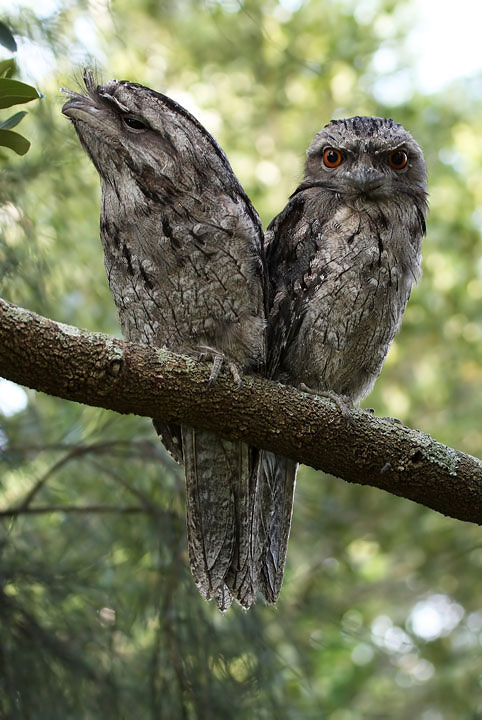
Tawny Frogmouth, Australia (Photo: John Dickenson)


